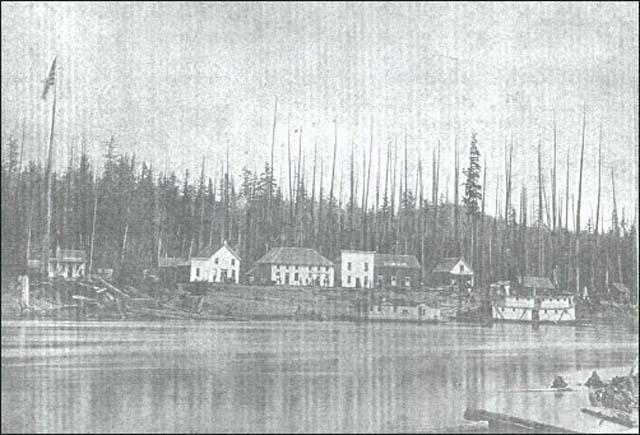The view in the photo above is of the east side of the Skagit, about where downtown Mount Vernon is now. Various publications indicate either 1879 or 1881; the village of Mount Vernon began in 1877. The photographer was standing about where the west end of the bridge to Mount Vernon and the Memorial highway is now. From left to right, you will see the Bonanza Saloon with Henry Cooper (of later Lyman fame) in front; Clothier & English general store — the first building in town, with Skagit Ned's upstairs; the second hotel in town, owned by Brann and Moran; the first hotel — Ruby House/McNamara Hotel and billiards room, owned by M. McNamara; a floating house on the river; Drug store, owned by Dr. D.Y. Deere; a logging camp. The steamer Glide is on the river. Can you tell us anything more about this photo?
]Update 2004: With the help of research Tom Robinson, we have determined that Brand and Moran was actually the hotel originally opened as the Mount Vernon Hotel by partners George V. Brann and a Mr. Moran who was not around for very long. Brann also owned logging camps, including at least one on Whidbey island, and he also owned a hotel-saloon at LaConner that was originally called the Tremont House. The 1906 book, Illustrated History of Skagit and Snohomish Counties, notes that Brann came to the Skagit river area very early, in 1881, and sold the Mount Vernon Hotel in 1890. At that point, he concentrated on the liquor business, which was still his trade in 1906. Michael McNamara was the owner of the Ruby House, which he built in 1879 and named for the mini-gold rush at Ruby creek in the upper Cascades.]
|

 810 Central Ave., Sedro-Woolley, Washington, 98284
810 Central Ave., Sedro-Woolley, Washington, 98284